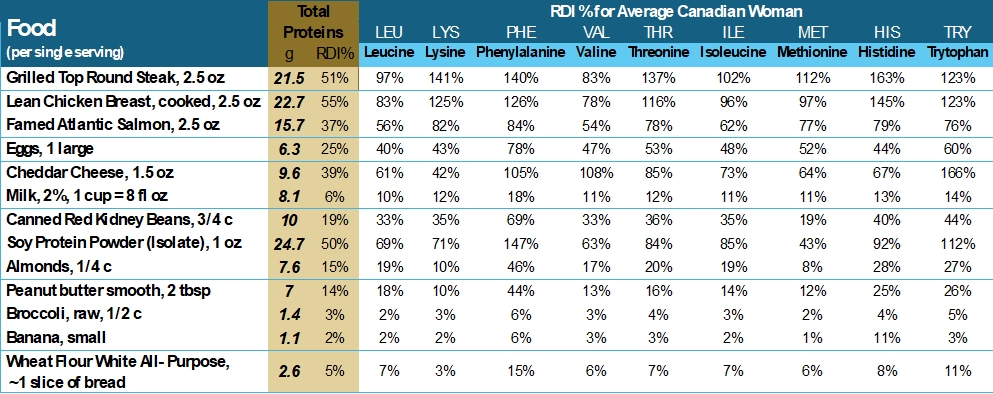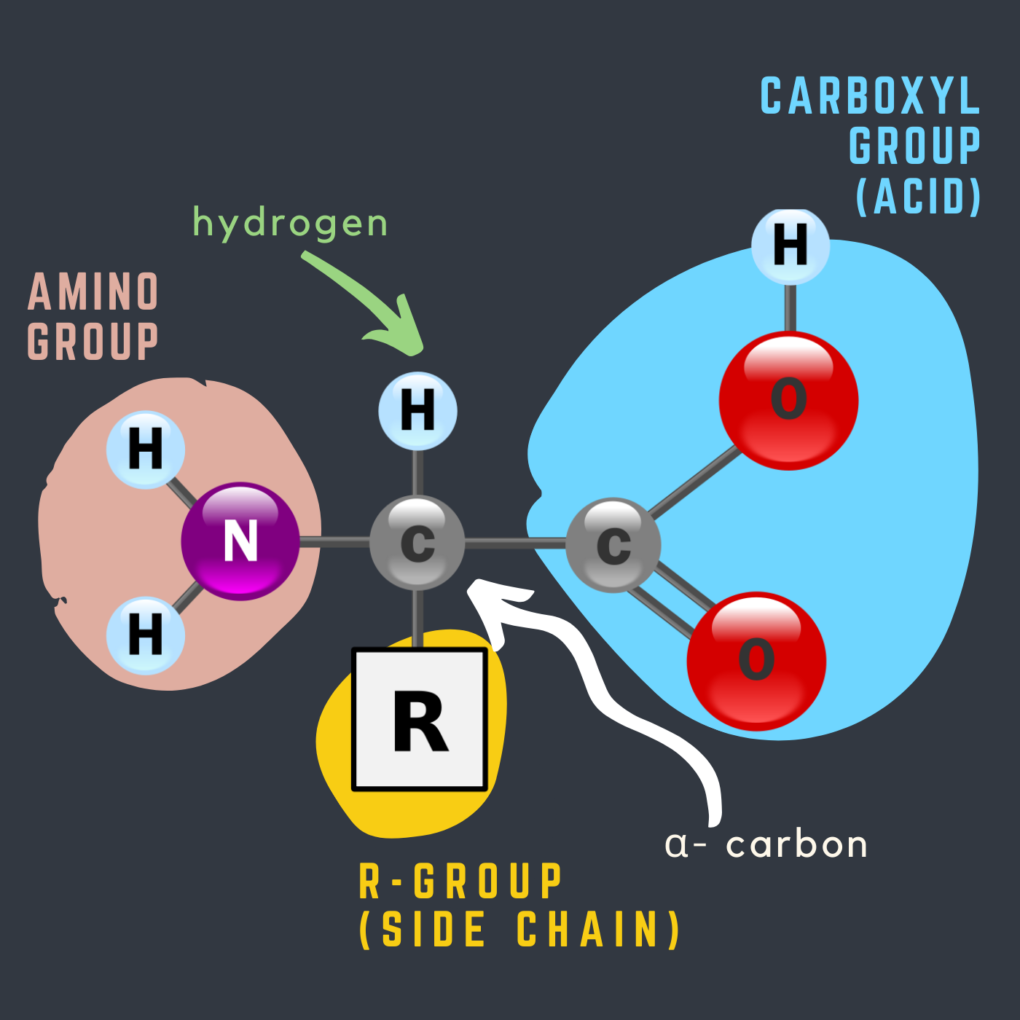Building proteins from amino acids
I never thought I would be writing about the ‘building blocks’ of the human body, amino acids (AA) for a SAIFood blog. Being that SAIFood normally discusses the topics of sustainable agricultural innovations and food, covering what is new or pressing, who knew we’d be writing about the fundamentals of life and protein. Yet, why wouldn’t we discuss amino acids, especially in our #talkingprotein series? Without them, we wouldn’t be here, nor would the plants and animals we rely on for agriculture. So let’s jump in.
The double-AA battery of life

Source: Compound Interest, 2014
At the beginning of this series we quickly jumped into what is a protein, it is a chain of amino acids, in which different combinations form different proteins. There are 20 AAs that combine to form different proteins, of which, 9 are essential for human diets, as we cannot produce them ourselves.
As the second-largest component of our bodies, amino acids that form into proteins provide structure (bones and muscle) and are a necessary fuel source. You may think of protein as muscles, tissue, and cells, this is true, but they are more than just that. Amino acids are the building blocks or ‘AA’ battery of our existence as the chains of protein they form makeup 20% of the human body.
The essential 9

Source: Technology Networks, 2019
Shown above are the 20 AAs that are common to human needs. Our bodies are able to synthesize 11 of the 20 amino acids, yet unable to produce 9 essential AA. These AAs in order of recommended daily allowance are leucine, lysine, phenylalanine, valine, threonine, isoleucine, methionine, histidine, and tryptophan. Leucine the AA with the highest recommended consumption regulates our glucose level, along with a list of other metabolic functions, including the growth and repair of muscle and bone tissue. Lysine often found in red meat, fish and dairy both helps to absorb calcium and is used in our immune defence system. The smallest requirement of AA is tryptophan, and is a precursor to serotonin, which regulates our “appetite, sleep, mood, and pain”. These essential amino acids offer the energy and information our brains and bodies need to grow tissue, convert energy, repair our immune system, and how to absorb nutrients to live.
While we can source our essential proteins from both plants and animals, typically, animal proteins have a higher concentration of these 9 essential AAs per recommended serving size than a plant source. Shown below is a table, showcasing the percent of recommended daily intake (RDI%) of these essential AAs can be obtained through one recommended servicing size by the Canadian Food Guide and Unlock Food, for the average Canadian woman of 154 lbs. In this chart it is apparent that meat and cheese offer a healthy dose of essential proteins, whereas almonds, peanut butter, banana’s and broccoli offer a much lower amount, requiring you to eat numerous servings to achieve your RDI%. That being said, the legume family offers a great option for the plant family to help get those essential AA’s. Two servings of beans nearly have you reaching your RDI% and if you’re working out, a scoop of soy protein powder can easily help obtain the necessary AA’s.

Essential amino acids from one serving, as a percent of RDI for the average Canadian woman
Source: My Food Data, 2019
Important but not ‘essential’?
Of the remaining 11 AA, that are not classified as ‘essential’ the title nonessential is a lie! While they might not be classified essential, because your body is able to synthesize them naturally, they are still essential to us, just not in our diets. Of these AA’s, 6 are ‘conditionally’ essential, suggesting that our synthesis can be limited, and we may need to rely on our diets at times to supplement our needs. Like the essential AAs, our nonessential AA play host to a number of important roles which include DNA and protein synthesis and digestion and absorption of our dietary nutrients.
The big of the small
When it comes to our existence, function, and the food we eat, amino acids might be small in scale, but they are big in the sense that we are nothing without them. Given that we live in constant demand of at least 9 amino acids, we rely on a food network to supply us with these essentials of life. From this demand, agriculture has not only been successful in providing a variety of commercial products to fill our protein (and therefore AA) needs but also has been able to make it a competitive market.
Understanding the AA

Amino acids form chains of protein, known as polypeptides, but in order to form these, there are five components needed. A hydrogen atom along with three other ‘groups’ (amino, carboxyl [forms the acid], and R-group) bond to a central carbon atom. It is the R-group which determines which of the 20 AAs is produced from the bonding and the behaviour of the chain (learn more about their chemical behaviours here). When multiple AA’s bond into chain, they form a peptide, which on their own or in a chain of polypeptides, form a protein.



I feel really happy to have seen your blog and look forward to so many more entertaining times reading here. Thanks once more for all the details.